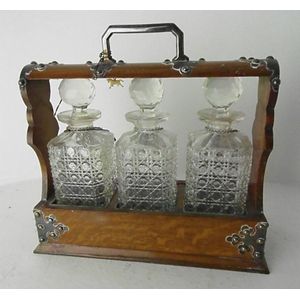Oak Tantalus with Three Crystal Decanters
An Edwardian oak tantalus, comprising three cut crystal decanters with faceted stoppers enclosed within an open rectangular oak case with shaped ends. 33 cm high.
You must be a subscriber, and be logged in to view price and dealer details.
Subscribe Now to view actual auction price for this item
When you subscribe, you have the option of setting the currency in which to display prices to $Au, $US, $NZ or Stg.
This item has been sold, and the description, image and price are for reference purposes only.
- Oak - Native to Europe and England, oak has been used for joinery, furniture and building since the beginning of the medieval civilisation. It is a pale yellow in colour when freshly cut and darkens with age to a mid brown colour.
Oak as a furniture timber was superceded by walnut in the 17th century, and in the 18th century by mahogany,
Semi-fossilised bog oak is black in colour, and is found in peat bogs where the trees have fallen and been preserved from decay by the bog. It is used for jewellery and small carved trinkets.
Pollard oak is taken from an oak that has been regularly pollarded, that is the upper branches have been removed at the top of the trunk, result that new branches would appear, and over time the top would become ball-like. . When harvested and sawn, the timber displays a continuous surface of knotty circles. The timber was scarce and expensive and was used in more expensive pieces of furniture in the Regency and Victorian periods. - Tantalus - A tantalus is a container for holding two or three glass or crystal bottles of alchoholic drinks. A tantalus may take various forms, the most common being made from silver, silver plate or wood with the three bottles in a circle or two bottles in line with a central handle. A larger version has three bottles in a line with two end supports and a horizontal top and handle. To prevent unauthorised access, some tantalus have a locking mecahnism that prevents the bottles and stoppers being removed from the bottles when secured.
A box tantalus, as the name implies is an elaborate wooden box made of a fancy timber such as coramandel, with divisions for the bottles and a lockable lid. Some of these type are designed for liquers and include the liquer glasses set into fitted holders. - Edwardian - The Edwardian period of English furniture and decorative arts design is named for Edward VII (1841 ? 1910) who was King of the United Kingdom and the British Dominions and Emperor of India for the brief period from 1901 until his death in 1910. It follows the Victorian period, in turn was followed by the Art Nouveau and Art Deco styles. In Australia, designs of this period are also known as being in the Federation style.
This item has been included into following indexes:
- tantalus (decanter sets)
Visually similar items
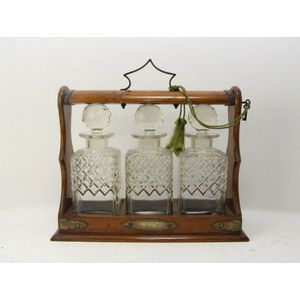
An oak three bottle tantalus. 27 cm high, 35 cm wide, 13 cm deep.
Sold by
in
for
You can display prices in $Au, $US, $NZ or Stg.
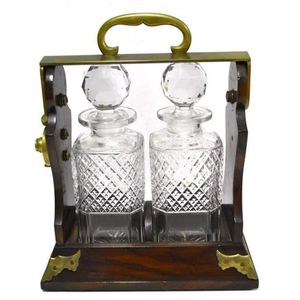
A Betjemann oak & brass tantalus with two crystal decanters, patent no. 33205
Sold by
in
for
You can display prices in $Au, $US, $NZ or Stg.
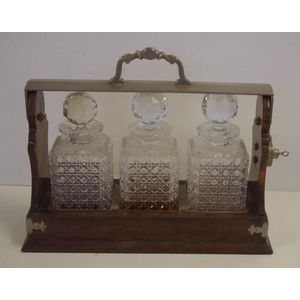
Antique English 3 decanter tantalus by Betjemanns, London, 41.5 cm wide
Sold by
in
for
You can display prices in $Au, $US, $NZ or Stg.
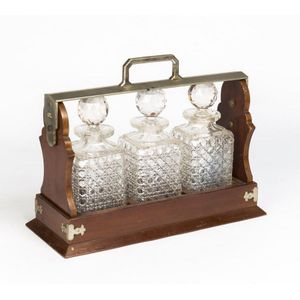
A Tantalus with 3 hobnail cut crystal decanters, late 19th early 20th century. 32 cm high, 41 cm wide
Sold by
in
for
You can display prices in $Au, $US, $NZ or Stg.
